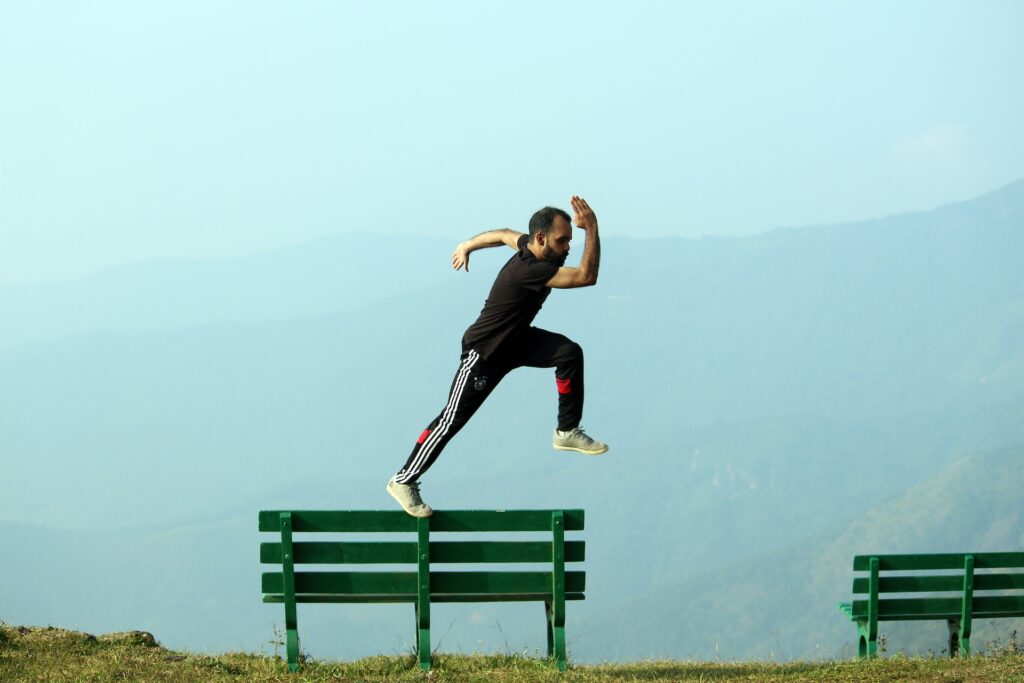- In a nutshell:Analytics and advanced analytics have important differences, with advanced analytics using AI models to predict future outcomes.
- Traditional data analytics focuses on retrospective analysis of historical data, while advanced analytics offers forward-looking insights.
- Traditional analytics relies on structured data and standard statistical techniques, while advanced analytics handles structured and unstructured data using AI and machine learning algorithms.
- Advanced analytics enables predictive modeling and forecasting, providing valuable insights for strategic decision-making.
- Businesses need to consider data infrastructure, quality, and skill sets when implementing advanced analytics for a competitive edge.
There's a whole lot of jargon in today's data world. For example, the terms analytics and advanced analytics: Is it really necessary to make a distinction between them? Or are people just trying to get fancy and invent a new buzzword? There's certainly overlap between these concepts, but in reality, there are important differences. Think of it as the difference between a telescope and a Hubble Space Telescope. While both aim to explore the cosmos, one offers a broader, deeper view, revealing intricate details that were once invisible. So what's the key difference? Traditional data analytics involves retrospective analyses of historical data, providing insights into past performance and trends. Advanced analytics includes using AI models to predict future outcomes based on historical data. In this post, we'll explore the differences between traditional data analytics and advanced analytics, explicitly focusing on integrating AI models and predictive capabilities. Understanding these nuances is essential for data analysts and managers who want to make informed decisions. By exploring the characteristics, tools, techniques, and applications of both traditional and advanced analytics, we can identify the main differences between them.
Traditional Data Analytics
Traditional data analytics—also called descriptive analytics—primarily focuses on setting the base of all data analysis by understanding what has happened in the past. It emphasizes the analysis of historical data to find patterns, understand trends, and make firmly grounded and informed decisions. The characteristics of traditional analytics often include the following:
- Analysis of Structured Data: The data used is typically structured and well-understood, often found in tables or databases.
- Retrospective Insights: It provides a backward-looking view of the data, giving insights into past performance.
- Regular Reporting: The process is repetitive and follows a pre-set pattern, often daily, weekly, or monthly.
Tools and Techniques Used
Traditional data analytics primarily relies on standard statistical techniques and tools, including SPSS, SAS, and Excel. These tools generate reports, visual representations, and dashboards that aid in understanding data patterns, trends, and relationships.
Applications and Use Cases
Traditional analytics finds applications across various industries in financial reports, sales reports, website metrics, and much more. For instance, a retail store might use traditional analytics to track past sales data and understand what products sell the best during particular seasons. Traditional data analytics is the cornerstone of data analysis, providing critical insights into past trends and performance. However, it is limited in its capabilities to predict future outcomes, a gap filled by advanced analytics.
Advanced Analytics
Advanced analytics refers to the analysis of data that uses high-level methods and tools to forecast future trends, behaviors, and events. This type of analytics is forward-looking, moving beyond historical data analysis to offer robust predictions and generate powerful insights for decision-making. Advanced analytics is characterized by:
- Complex Data Structures: It can analyze structured and unstructured data, facilitating a more comprehensive understanding of data patterns.
- Predictive Capabilities: The core offering of advanced analytics is its ability to predict future outcomes based on historical and current data analysis.
- Dynamic Scope: Advanced analytics models can be updated with new data, constantly improving predictions and insights.
Integration of AI Models
The primary distinguishing feature of advanced analytics is the integration of Artificial Intelligence (AI) and Machine Learning (ML) models. These technologies bring a level of sophistication to data analysis, enabling more accurate and personalized predictions. AI models analyze vast amounts of data quickly, efficiently, and continuously, evolving and learning over time to produce improved predictions.
Predictive Modeling and Forecasting
One of the vital benefits of advanced analytics is its ability to predict future scenarios using statistical and mathematical techniques. Advanced analytics can offer valuable foresight and actionable insights to drive strategic decision-making, from predicting customer behavior to forecasting sales and market trends. Advanced analytics represents a significant step from traditional analytics, extending its capabilities with predictive modeling, AI integration, and handling complex data structures.
Key Differences Between Traditional and Advanced Analytics
When comparing analytics and advanced analytics, it's crucial to highlight the primary points of divergence between these two approaches. The differences largely revolve around data sources and types used, analytical methods and algorithms, and their impact on decision-making capabilities.
Data Sources and Types
Traditional analytics mainly deals with structured data easily organized into predefined models like Excel sheets or databases. In contrast, advanced analytics handles structured and unstructured data—such as text, images, and online customer interactions—offering a more comprehensive perspective on data patterns.
Analytical Methods and Algorithms
Traditional data analytics relies on standard statistical techniques, while advanced analytics harnesses high-level methods like AI and machine learning algorithms. These sophisticated techniques enable advanced analytics to process complex data and generate highly precise predictions.
Decision-Making Capabilities
One critical differentiation point is the nature of the insights each kind of analytics provides. Traditional analytics offers insights based on past performance, aiding in understanding historical trends and making informed decisions. Advanced analytics analyzes historical data and predicts future outcomes, providing actionable insights that can guide tactical and strategic decision-making. While traditional and advanced analytics play vital roles in modern business decision-making, they differ significantly in their data handling capabilities, analytical methods, and effect on decision-making processes. The shift from traditional to advanced analytics represents a move from diagnostic analysis to predictive and prescriptive analysis, opening up new possibilities for businesses to optimize their operations and strategies.
Use Cases for Traditional Analytics
One of the main advantages of traditional analytics is its application to analyzing historical data. Businesses across industries leverage traditional analytics to analyze past data for various purposes, such as performance checks, sales trend identification, and understanding seasonal variations. For instance, a CPG company could evaluate its past sales data to identify the best-performing products or determine the periods of high and low sales.
Reporting and Visualization
Traditional analytics also play a critical role in presenting data in an understandable and visually appealing way. Tools like MS Excel and Tableau, commonly used in traditional analytics, provide easy-to-use features for creating reports and visualizing data. These reports and data visualizations help stakeholders understand complex data sets, identify patterns, and make informed decisions.
Use Cases for Advanced Analytics
Advanced analytics has taken data analysis a step further, using higher-level techniques to forecast future trends and events. Two significant use cases for advanced analytics are demand forecasting with AI and predicting customer churn in retail.
Demand Forecasting With AI
Unlike traditional analytics that use simplistic statistical models, advanced analytics employs AI to provide more precise and dynamic demand forecasting. This approach allows businesses to foresee future demand for products or services based on comprehensive analysis, including consideration of multiple variables and big data.
Customer Churn Prediction in Retail
Another powerful application of advanced analytics is predicting customer churn. Subscription businesses, for example, can apply machine learning algorithms to analyze customer behavior data and predict which customers are likely to stop doing business with them. These predictions empower businesses to take proactive measures and devise effective retention strategies. While traditional analytics gives a backward-looking view of the business, advanced analytics offers a peek into the future. It expands traditional analytics capabilities by forecasting future scenarios, enabling businesses to be more proactive and strategic in their approach.
Considerations for Implementing Advanced Analytics
As businesses look to extract more value from their data, advanced analytics offers an appealing route. Before beginning the transition, businesses need to consider two key areas: data infrastructure and quality and the need for specific skill sets and training.
Data Infrastructure and Quality
Advanced analytics, which can handle large volumes of structured and unstructured data, necessitates a robust data infrastructure. With the necessary infrastructure, businesses might be able to maximize the potential of advanced analytics. Investing in scalable and reliable storage systems that can handle data of varying sizes and types is essential. The quality of the data used in advanced analytics is crucial. Poor data quality can lead to inaccurate predictions, significantly hampering decision-making processes. Regular data cleaning and refining should be part of any advanced analytics strategy. Additionally, some AI platforms (like Pecan) offer automated data cleaning and preparation, removing the need for this time-consuming effort.
Skill Sets and Training Needs
Advanced analytics, though automated to a large extent, still requires a certain level of expertise to manage it and derive value from it. Integrating AI and ML models requires understanding and skills that might not be present with current data analysts. Companies like Pecan offer automated AI platforms that a company's existing data analysts can use. These platforms allow analysts to leverage advanced analytics capabilities without learning complex programming or statistical methods.
Future Trends in Advanced Analytics
Advanced analytics continuously evolves, shaped by rapid technological advancements and an increasing understanding of data's potential. Two areas expected to shape the future of advanced analytics are the growing role of machine learning and AI and the impact of these technologies on business intelligence and strategy.
The Role of Machine Learning and AI
Machine learning and AI play an increasingly significant role in advanced analytics. With their ability to learn from experience and improve their predictions over time, these technologies will bring more robust and accurate forecasting capabilities.
Impact on Business Intelligence and Strategy
As advanced analytics become more widely adopted, it will profoundly impact business intelligence and decision-making processes. Real-time data processing, predictive modeling, and personalized interactions are just a few ways advanced analytics will reshape business strategy and operations.
Use Advanced Analytics for a Competitive Edge
In understanding analytics vs. advanced analytics, we've established that while both play a critical role in modern businesses, they vary significantly in their data-handling capabilities, analytical methods, and impacts on decision-making. Traditional analytics provide valuable insights into past performance, aiding in understanding trends and making informed decisions. Advanced analytics analyzes historical data and predicts future outcomes, paving the way for more proactive and strategic decision-making. In a world where every decision can impact business outcomes, leveraging advanced analytics can provide a competitive edge. As the field continues to evolve, businesses embracing these capabilities benefit from improved insights, more precise forecasting, and more informed decision-making capabilities. Ready to move beyond analytics to advanced analytics? We're here to help. Get in touch today, or if you want to try building predictive models yourself, sign up for a free trial of Pecan.








